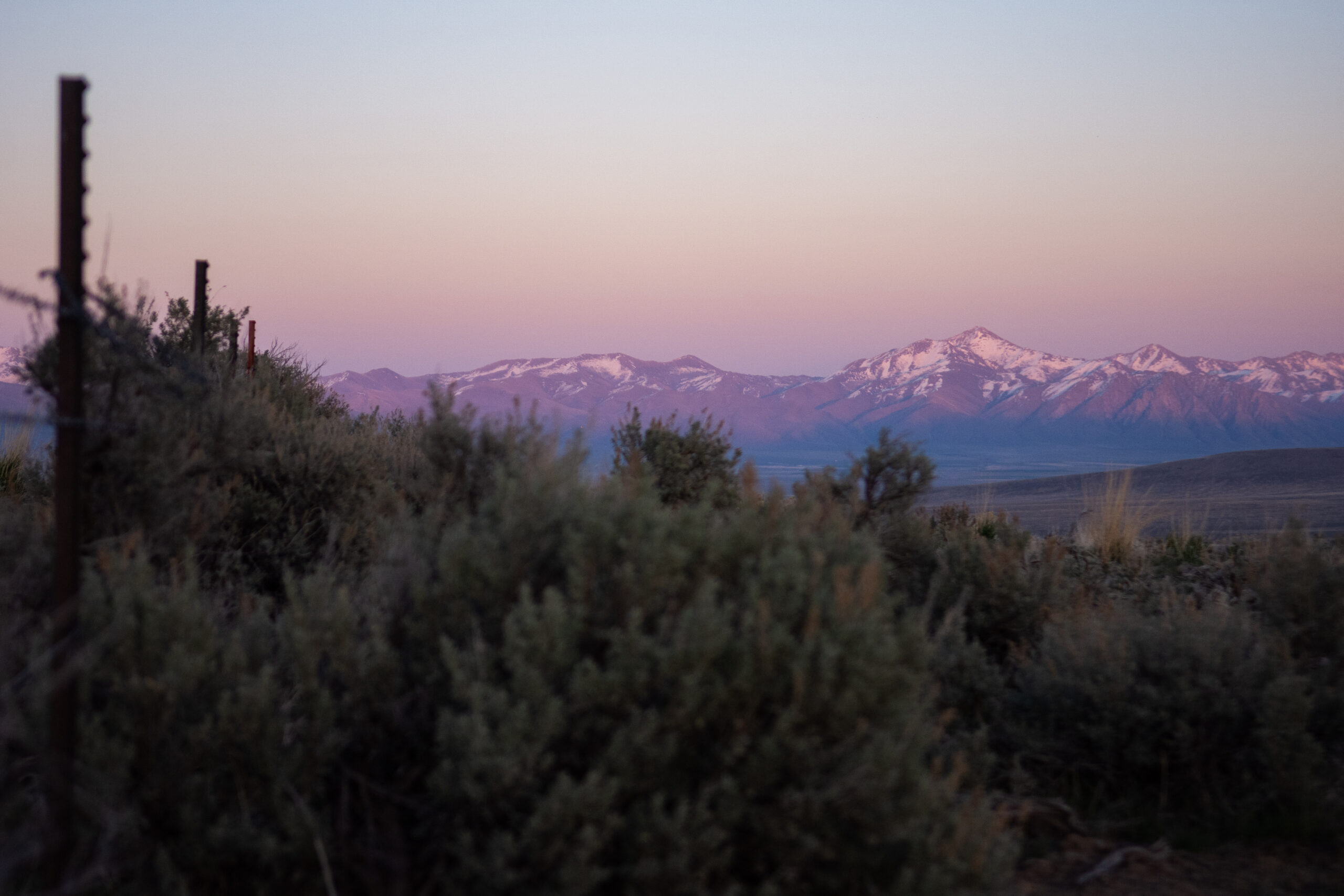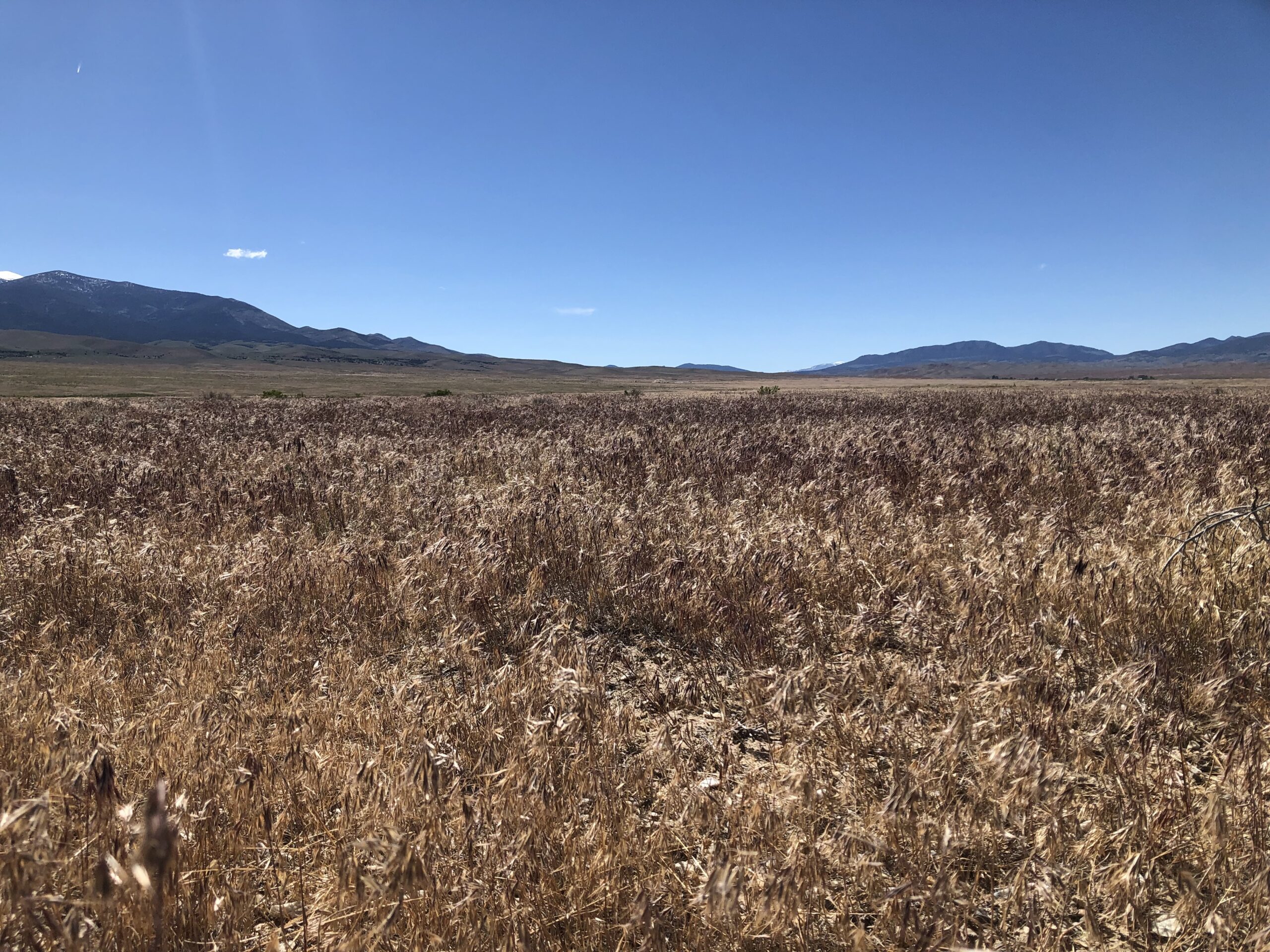Indy Q&A: UNR ecologist Tamzen Stringham discusses Nevada’s rangeland

Good morning, and welcome to the Indy Environment newsletter. I'm Amy Alonzo, the environment reporter for The Indy.
This week, let’s take a moment to learn a little more about something we all have in common — Nevada, the state we call home — from one of the Great Basin’s leading rangeland biologists.
Tamzen Stringham is a professor at UNR’s Department of Agriculture, Nutrition and Veterinary Sciences who has studied Nevada’s rangelands — vast open spaces grazed by wildlife and domestic animals alike — for more than 15 years and the Great Basin for three decades.
Stringham developed her interest in agriculture while growing up on a ranch in California’s Grass Valley and, decades later, her passion for rangeland science and the Great Basin still burns strong.
I first heard Stringham, who has a master’s in agriculture and resource economics and a doctorate in rangeland science, speak this summer at a Bureau of Land Management National Wild Horse and Burro Advisory Board meeting in Reno about legacy grazing — the long-lasting effects decades of unregulated grazing prior to the formation of the Bureau of Land Management (BLM) had, and still has, on the Great Basin.
After hearing her speak, I wanted to learn more about what Stringham has seen out in the field. I reached out to her after the panel for an interview — first for a story I was working on about wild horses, then for a follow-up interview to discuss her work in the Silver State.
Below is a condensed version of our second interview, edited for length and clarity.
And, as always, we want to hear from readers. Let us know what you’re seeing on the ground and how policies are affecting you. Email tips to me at [email protected].
To get this newsletter in your inbox, subscribe here.

What is your role as a rangeland scientist?
I advocate for rangelands and animals that have no voice.
What’s something people might not know about Nevada’s rangelands?
In Nevada, approximately 12 million acres are covered by pinyon pines and junipers. Eighty percent of those trees didn’t exist during European settlement.
So, the way we know that is we age trees. We do a lot of coring, and our pinyons and junipers are between 70 and 100 years old. Some were here during settlement, but those aren’t the predominant trees.
The primary theory is that settlers got here with a lot of animals — sheep and cattle. That reduced the fine fuels, and thus the frequency of wildland fires, significantly. We also fought fires and put Native Americans who burned [forests and rangelands to keep the landscape healthy] onto reservations.
And now we have a lot of trees.
Pinyon juniper woodlands can be found throughout the state. What sort of challenges do they create?
Their natural habitat is rocky outcrops where fires don’t typically burn. As they’ve expanded, they’ve come down the hillsides into much more fertile soil. They outcompete the grasses and the brush and the flowers that would naturally be there. Those species disappear, and you end up with trees and bare ground and soil erosion if you’re on a slope below those trees.
There are anywhere from 200 to 300 trees per acre on a pinyon encroached site.
Ely, Caliente and Tonopah are seriously impacted.
Invasive and highly flammable cheatgrass is a horrible problem in Nevada. Is there a way to remedy it?
Science will move forward in its knowledge of how to reduce the expansion of cheatgrass, but we aren’t going to get rid of it.
What changes have you seen in the sagebrush ecosystem?
The majority of Nevada is Wyoming sagebrush. That type of sagebrush is rapidly converting to cheatgrass due to wildfires. Mountain sage is reducing in quantity because of the pinyon juniper encroachment. Low sage typically grows in a mosaic with mountain sage. It’s also at risk of tree domination.
Then we have black sage, which grows more in the Ely and Caliente areas. That is sage grouse’s preferred sagebrush. It’s impacted by both fires and trees, depending on where it’s growing.
Is there anywhere in Nevada where cheatgrass isn’t thriving?
Tonopah to Caliente. The cheatgrass doesn’t do well there. It might be a combination of soil and climate. They just don’t have a big cheatgrass problem.
What impact has livestock grazing had on Nevada?
If we dial the clock back to settlement time when thousands and thousands of cattle and sheep were running across the Great Basin, they did some really significant damage. We call that legacy grazing. Some of that we will never recover from.
It was rough, and we are living with the consequences of that.
Livestock were everywhere at the time. They grazed out the bunchgrass community, primarily. As you graze out the bunchgrasses, the brush increases. We have a lot more sagebrush cover today than we did at settlement time — we had a lot more grass then.
What impact do wild horses have on our rangelands?
They’re really hard on our riparian areas, our creeks, our meadows, not to mention our rangelands in general. Less than 2 percent of the Great Basin is considered riparian.
Where we have lots of horses, we have poor conditions in springs and meadows. The argument can be made that livestock can do that also, and that is true. But the difference is BLM can require permitees to remove livestock, and we can’t do that with horses.
What needs to happen to get Nevada’s rangelands back in balance?
I don’t know if we can do that.
There has to be a triage approach looking at what I’d call high value habitat — areas that are prime wildlife habitat, areas with water.
It’s really hard to re-seed areas in low precipitation zones, where we get 7-10 inches of rain. We have between a 5 and 7 success rate with native plants. We spend a whole lot of money seeding range that we’re not successful seeding. In my opinion, we need to be focusing on areas that have more opportunity for success because we have limited dollars.
Rain is king. Moisture is king. And if we don’t have it, we aren’t successful. And cheatgrass drinks the water earlier than our seedlings come up.
I would focus restoration dollars on rangelands that are co-dominated by sagebrush and bunchgrasses, which are at a much lower risk of converting to annual grass dominance [such as cheatgrass]. I would also focus on rangelands that were once sagebrush and bunchgrasses that are being encroached by juniper or pinyon, but where the understory is still intact.
What needs more attention on Nevada’s landscape?
I would like to see more attention on the ecological disaster rangeland fires create.
Fire is political. We always hear about wildfires. We don’t hear about fires out on rangelands because either the people who live out there are few and far between and don’t have the political ties to make a big deal out of it, or there are no people out there.
The biggest fire we’ve had this year is the York Fire, which burned up the Mojave National Preserve. It’s desert tortoise habitat, it burned through the largest stands of Joshua trees, and all we heard about was the smoke pouring into Las Vegas.
We suck at rehabbing desert fires. But all the money goes to forest fires because people live in the trees and people love their trees. And the critters that live out on rangelands have no voice.

Here’s what else I’m watching this week:
A great read from my co-worker, Daniel Rothberg, about a Truckee River project that restores access to a key spawning ground for cui-ui, a culturally significant fish for the Pyramid Lake Paiute Tribe.
An interesting read (or listen) from NPR on how Western towns reliant on extractive resources are looking to rebrand themselves.
Firefighters are the heroes after a big blaze, but what about the dispatchers? Kylie Mohr at High Country News looks at the challenges they face.
Drain Lake Powell to fill Lake Mead? At least one Nevada official is behind that idea.
A Las Vegas Review-Journal story looks at what could go wrong if a housing development is built on an old Southern Nevada mine.
